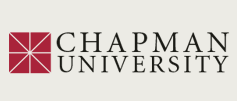Document Type
Article
Publication Date
2013
Abstract
This study examined the effects of BMP7 gene transfer on corneal wound healing and fibrosis inhibition in vivo using a rabbit model. Corneal haze in rabbits was produced with the excimer laser performing -9 diopters photorefractive keratectomy. BMP7 gene was introduced into rabbit keratocytes by polyethylimine-conjugated gold nanoparticles (PEI2- GNPs) transfection solution single 5-minute topical application on the eye. Corneal haze and ocular health in live animals was gauged with stereo- and slit-lamp biomicroscopy. The levels of fibrosis [a-smooth muscle actin (aSMA), F-actin and fibronectin], immune reaction (CD11b and F4/80), keratocyte apoptosis (TUNEL), calcification (alizarin red, vonKossa and osteocalcin), and delivered-BMP7 gene expression in corneal tissues were quantified with immunofluorescence, western blotting and/or real-time PCR. Human corneal fibroblasts (HCF) and in vitro experiments were used to characterize the molecular mechanism mediating BMP7’s anti-fibrosis effects. PEI2-GNPs showed substantial BMP7 gene delivery into rabbit keratocytes in vivo (26104 gene copies/ug DNA). Localized BMP7 gene therapy showed a significant corneal haze decrease (1.6860.31 compared to 3.260.43 in control corneas; p,0.05) in Fantes grading scale. Immunostaining and immunoblot analyses detected significantly reduced levels of aSMA (4665% p,0.001) and fibronectin proteins (4865% p,0.01). TUNEL, CD11b, and F4/80 assays revealed that BMP7 gene therapy is nonimmunogenic and nontoxic for the cornea. Furthermore, alizarin red, vonKossa and osteocalcin analyses revealed that localized PEI2-GNP-mediated BMP7 gene transfer in rabbit cornea does not cause calcification or osteoblast recruitment. Immunofluorescence of BMP7-transefected HCFs showed significantly increased pSmad-1/5/8 nuclear localization (.88%; p,0.0001), and immunoblotting of BMP7-transefected HCFs grown in the presence of TGFb demonstrated significantly enhanced pSmad-1/5/8 (95%; p,0.001) and Smad6 (53%, p,0.001), and decreased aSMA (78%; p,0.001) protein levels. These results suggest that localized BMP7 gene delivery in rabbit cornea modulates wound healing and inhibits fibrosis in vivo by counter balancing TGFb1-mediated profibrotic Smad signaling.
Recommended Citation
Tandon A, Sharma A, Rodier JT, Klibanov AM, Rieger FG, Mohan RR. BMP7 Gene Transfer via Gold Nanoparticles into Stroma Inhibits Corneal Fibrosis in vivo. PLoS ONE. 2013;8(6):e66434. doi:10.1371/journal.pone.0066434.
Copyright
The authors
Creative Commons License

This work is licensed under a Creative Commons Attribution 4.0 License.
Included in
Animal Experimentation and Research Commons, Animals Commons, Musculoskeletal, Neural, and Ocular Physiology Commons, Nanomedicine Commons, Ophthalmology Commons, Other Pharmacy and Pharmaceutical Sciences Commons

Comments
This article was originally published in PLoS ONE, volume 8, issue 6, in 2013. DOI: 10.1371/journal.pone.0066434